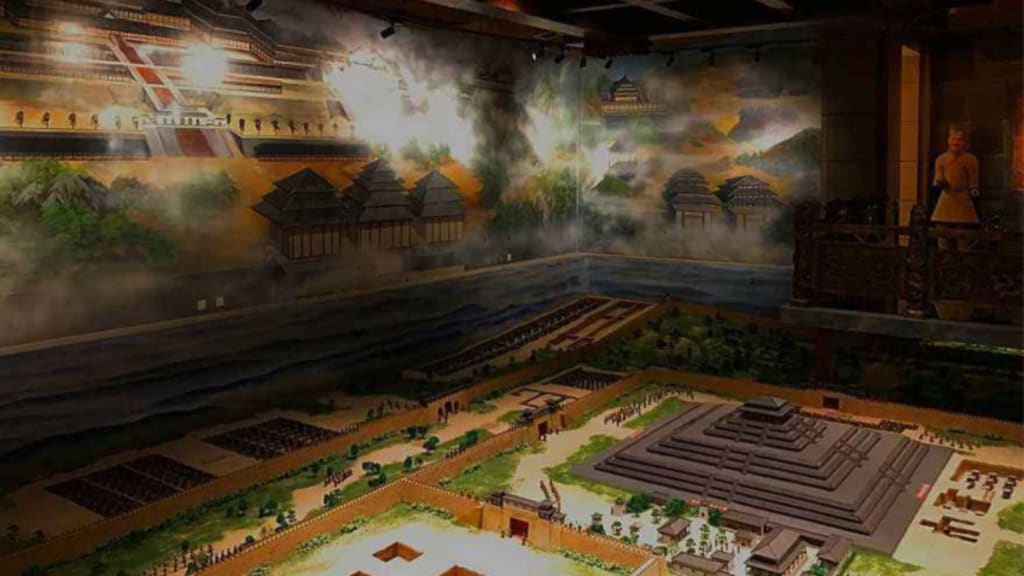
The Qin Shi Huang Tomb is one of the oldest tombs in China with mysteries waiting to be solved.
Emperor Shi Huang was the first person in history to unify China after destroying 6 vassal states, laying the foundation for Chinese territory for more than 2,000 years. He was also the emperor who created an unprecedented feudal autocracy, along with famous constructions such as the Great Wall and Tan Chi Dao. Even his tomb became a miracle for thousands of years.
Up to now, Qin Shi Huang's tomb is still intact at the foot of Ly Son mountain, not yet completely explored, making it even more mysterious. So what are the 5 unsolved mysteries at Qin Shi Huang's tomb?
The mystery of the curse of the terracotta warriors
Legend has it that Xiang Yu mobilized 400,000 people to dig Qin Shi Huang's tomb, then was cursed and eventually died at the hands of the "terracotta warriors".
The five cavalrymen who killed Xiang Yu on the banks of Wujiang were all Qin, born in the Guanzhong region, soldiers of the old Qin army, and they were all prototypes of terracotta warriors. Therefore, there is a theory that this army carries a deadly "curse" for those who take actions to disrupt the "sleep" of Qin Shi Huang.
The mystery of mercury in the underground palace
Whether or not mercury is in the underground palace has always been a controversial topic. Records of mercury originate from "History" and "Han Shu", but no one has actually experienced it.
With the development of science and technology, geologists Thuong Dung and Ly Dong Tien came to take samples twice. After many tests, they discovered that the central area had unusually high mercury levels, with an area of about 12,000 square meters. According to records, Qin Shi Huang wanted to use this mercury to create large and small rivers, preventing tomb robbers from entering.
But this also makes it difficult for archaeologists to explore the tomb.

Qin Shi Huang's body is still intact?
The "female corpse" excavated at Ma Vuong Doi during the Han Dynasty was preserved very well for 2,000 years, shocking researchers.
The Qin and Han dynasties are not far apart, the Han dynasty can do it, Qin Shi Huang with such great power can also do the same thing. Therefore, many people believe that his body will also be completely preserved.
Qin Shi Huang died while on tour. His remains could not be processed in time, so on the way back to the capital Ham Duong, Trieu Cao had to use fish to mask the odor. Therefore, there are also opinions that say the probability of Qin Shi Huang's remains is very low.
How deep is Qin Shi Huang's tomb?
Archaeological exploration data shows that the actual length of the underground palace of Lang Tan is 260m from East to West and 160m from North to South, with a total area of 41,600m2. Qin Shi Huang's underground palace was the largest underground palace in the Qin and Han dynasties, its scale was equivalent to five international football fields.
According to the latest data, this underground palace is not as deep as people imagine. The actual depth is nearly equal to the depth of the tomb in the great tomb of Qin Duke No. 1, Zhiyang. Calculated in this way, the actual depth from the mouth of the underground palace to the bottom is about 26 meters, and the deepest depth on the surface during the Qin Dynasty was about 37 meters.
The mystery of the burning of the terracotta warrior
When excavating terracotta warrior pits No. 1 and 2, a large amount of fire traces were found. For a long time, there have been two different opinions regarding this incident. Firstly, in the pits of the terracotta warriors there was wood and other organic matter, which over time produced methane gas and spontaneously combusted. Second, created by humans.
In June 2009, after carrying out the third excavation, archaeologists discovered that the North-South corridor running through the western area of the excavation site, connecting to the northern doorway, had been deformed. discolored, some places even burned. The terracotta warriors before the fire were broken into pieces.
Due to the different locations and sizes of the flames, the colors are also different. The burned statues are mainly located in ventilated places such as hallways, and the level of damage is also more serious than in other places. , showing that the fire was caused by humans.
Based on historical records, Xiang Yu was the most suspected person, because he and Qin Shi Huang had a deep hatred. After burning A Phong Palace and Ham Duong citadel, Hang Vu had not yet lost his hatred so he sent a large army to excavate and burn the tomb.





Comments
There are no comments for this story
Be the first to respond and start the conversation.